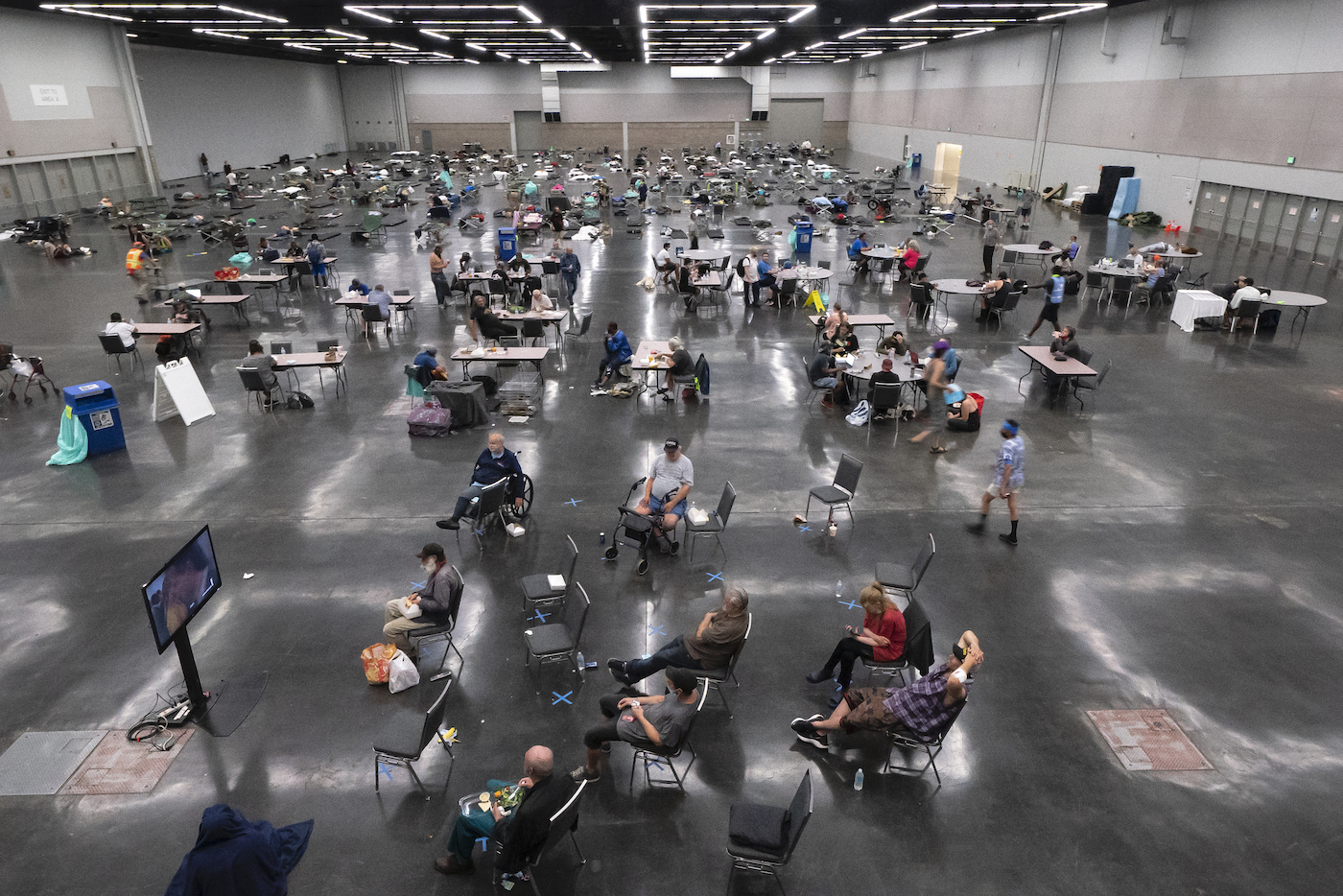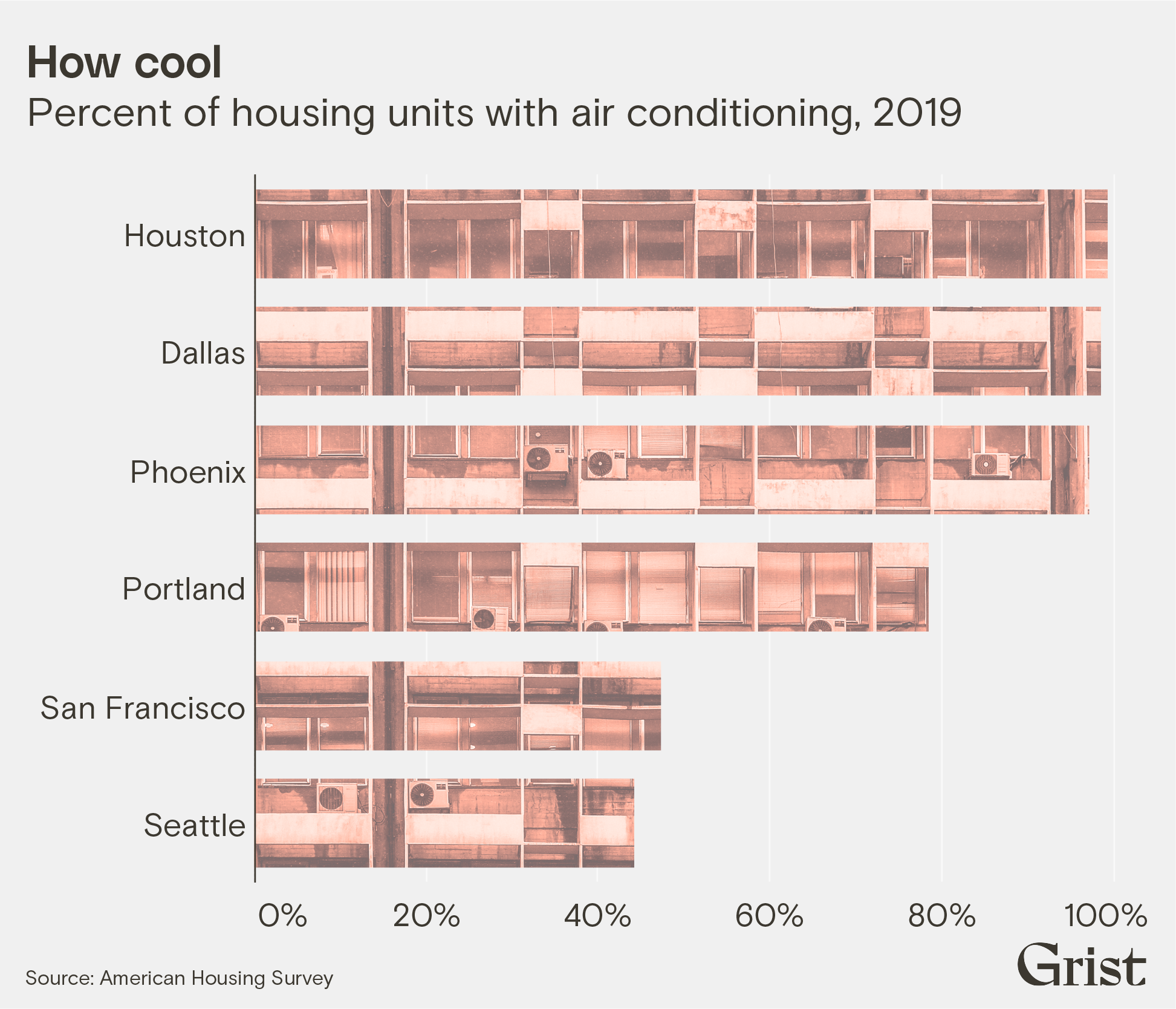Hello, and welcome to this week’s edition of Record High. I’m Jake Bittle, and today, we’re going to explore why a key heat solution often goes unused.
Back in the summer of 2021, as Seattle recovered from a Pacific Northwest heat dome that left more than 150 people dead in Washington state, emergency managers zeroed in on a big reason for the city’s vulnerability to heat. Not only did most households in Seattle not have air conditioning, but the city also had few public cooling centers where people could escape from high temperatures. Because Seattle’s climate is typically so mild, many schools and libraries don’t have A/C, so they couldn’t serve as refuges the way they might have in other regions of the country.
In the two years since the heat dome, Seattle has installed A/C units in a few more libraries and recreational centers, and applied for federal grant money to expand cooling in other buildings. But even as they work to add more public cooling centers, emergency managers are running into another obstacle that hotter cities have been dealing with for years: Even if a local government sets up cooling centers, people often don’t go to them.
Part of the reason is economic. It’s one thing to know that there’s a library with A/C downtown, but it’s another thing to get there. If you don’t have a car, you either have to walk or wait at a bus stop in sweltering heat, which might be more dangerous than staying where you are. In the South, where most homes and apartments have A/C, cooling centers are designed to provide shelter to low-income and unhoused people, but these populations are often the ones that have the most difficulty making a crosstown trip.
“Cooling centers need to be more than just a cold space. They need to be [places] that people have other incentives or reasons to go to.”
Kate Hutton, Seattle’s emergency planning coordinator
The city of Tampa, Florida, encountered this problem when it opened three cooling centers during a recent heat wave. Over the course of a week, around a dozen people visited each center per day, according to the Tampa Bay Times, which quoted a woman who was too afraid to walk to the nearest center two miles away. The facilities could have accommodated several times more visitors. In other cases, people might just not know what their options are: A CDC study of two Arizona counties last year found that “barriers to cooling center access among older adults include awareness of location and transportation.”
But even when people have easy access to cooling centers, they still don’t go, says Kate Hutton, an emergency planning coordinator for the city of Seattle.
When Hutton’s department interviewed Seattleites after the 2021 heat dome, many people said they wouldn’t be interested in a public cooling center even if it were right down the road. They gave several reasons for their reluctance: Some parents were worried about bringing their children around strangers, for instance, and some elderly people balked at the thought of sitting in a gym for hours surrounded by screaming children. And many people who were experiencing homelessness said they were wary of encountering stigma from wealthier people if they showed up at a public facility.
Perhaps the most common objection city officials heard was that being at a cooling center sounded boring. If a government building didn’t have food, or internet access, or activities of any kind, it was hard for many people to imagine spending hours there at a time, regardless of how excruciatingly hot it got outside.

“I think what we got from those conversations was that cooling centers need to be more than just a cold space,” said Hutton. “They need to be [places] that people have other incentives or reasons to go to.” But making the city’s cooling centers more attractive would require spending extra money on food and staff, and buying more A/C units is hard enough.
This reluctance to visit cooling centers is a particular challenge for temperate cities like Seattle, where most people still don’t have residential air conditioning and where public buildings are some of the only places to chill out. The city government can reach out to unhoused people and offer them transportation to libraries and schools, but that still leaves thousands of residents who choose to stay at home because it’s more private and more fun, and thus put their own health at risk.
“If you ask the average person if they want to upend their day and their schedule and their plans just to go be cool in a specific place, they’re going to say that’s not ideal for them,” Hutton told Grist. “They’re going to want cooling options that are part of their normal routine.”
By the numbers
Air conditioning is almost universal in the fast-growing cities of the South and Southwest, but it’s far less common in the more temperate Northwest. That’s begun to change, however, after a heat-dome disaster struck that region in 2021.

Data Visualization by Clayton Aldern
What we’re reading
Should Biden declare a “climate emergency”? Amid a sweltering summer, activists have been urging Biden to declare climate change a national emergency. My colleague Akielly Hu reports that declaring a heat disaster might be a better course of action, since it would unlock federal money to keep people cool.
Heat linked to prison suicide-watch incidents: A new study from Emory University found that suicide-watch incidents in Louisiana prisons increased by more than 30 percent on extreme heat days. Gina Jiménez broke down the harrowing new data for Inside Climate News.
Back to school in a heat dome: Chicago students went back to class this year during a searing Midwest heat dome, and the Chicago Tribune’s Sarah Macaraeg reports that many of the city’s public schools aren’t ready to deal with high temperatures. Many classrooms and cafeterias lack working A/C, which has parents and teachers worried.
There is no interest group for heat: Even though heat kills more people than any other climate disaster, politicians don’t give the issue much attention or money, writes Alexander Nieves for Politico. That’s because heat doesn’t have a political constituency, unlike the issue of drought in California, which has aroused the attention and activism of the state’s powerful agriculture industry.
How extreme heat threatens contraception: Over at The 19th, Shefali Luthra writes that high temperatures can make almost every form of contraception less effective. Condoms, emergency contraception pills, and pregnancy tests all need to be stored in temperatures of 86 degrees Fahrenheit or below, or else they’re liable to break or stop working.



